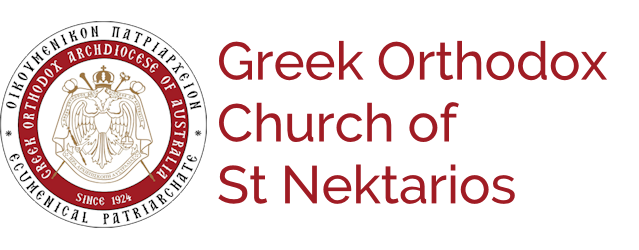In the Orthodox Church today, as in the Church of the early centuries, the three sacraments of Christian initiation – Baptism, Confirmation, First Communion – are linked closely together. An Orthodox who becomes a member of the Christ is admitted at once to the full privileges of such membership. Orthodox Children are not only baptised in infancy, but confirmed in infancy, and given communion in infancy.
“Suffer the little Children to come to Me, and Forbid them not; for such is the kingdom of Heaven” – Matthew xix, 14
There are two essential elements in the act of Baptism: the invocation of the Name of the Trinity, and the threefold immersion in water. The Priest says ‘ The servant of God [name] is baptised into the Name of the Father, Amen. And of the Son, Amen. And of the Holy Spirit, Amen.’ As the name of each person in the Trinity is mentioned, he Priest immerses the Child in the font, either plunging it entirely under the water, or at any rate pouring water over the whole of it’s body. If the person to be baptised is so ill that immersion would be life endangering, then it is sufficient for water to be poured over the forehead; but otherwise immersion must not be omitted.
“Therefore we were buried with Him through baptism into death, that just as Christ was raised from the dead by glory of the Father, even so we also should walk in newness of life. For if we have been united together in the likeness of His death, certainly we also shall be in the likeness of His resurrection.” – Romans vi, 4 – 5
Baptism signifies a mystical burial and resurrection with Christ; and the outward sign this is the plunging of the candidate into the font, follow by the emergence from the water. Sacramental symbolism therefore requires immersion or ‘burial’ in the waters of Baptism, and then ‘resurrection’ out of them once more.
Through Baptism we receive a full forgiveness of all sin, whether original or actual; we ‘put on Christ’, becoming member of His Body the Church. To remind them of their Baptism, Orthodox Christians usually wear throughout their life a small Cross, hung round their neck on a chain.
Baptism must normally be performed by a Bishop or Priest. In case of emergency, it can be performed by a Deacon, or by a man or woman, provided they are Christian. The person who Baptises must himself have been Baptised.
Bibliography: Kallistos,. 1993. The Orthodox Church. 1st ed. London, England: Penguin Books.

Write a comment: